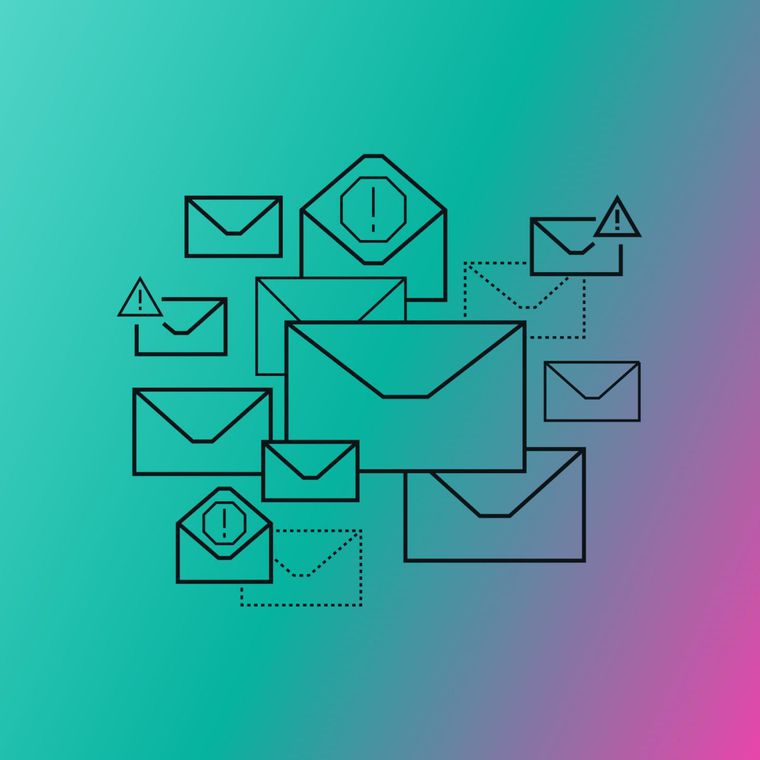Email quarantine provides a controlled middle ground between immediate delivery and permanent deletion, maintaining message accessibility for security review while preventing potential threats from reaching end users. This approach enables security teams to analyze attack patterns, investigate incidents, and make informed disposition decisions. Quarantine systems also support compliance requirements by maintaining audit trails and enabling message recovery when needed.
Email Quarantine
Email quarantine provides a controlled isolation mechanism that stores potentially harmful messages, preventing delivery while enabling security review processes.
What Is Email Quarantine?
Email quarantine systems protect organizations by intercepting and isolating suspicious email messages before they reach end-user inboxes, while maintaining structured review processes for final disposition.
Modern email quarantine systems function as trust verification layers within broader email security architectures, enhancing trust in email communications through systematic threat isolation and analysis. Also, effective email security must "block mass email attacks in order to detect specific, targeted attacks as indicators of more serious compromise. This positions quarantine as a filtering mechanism that enables security teams to focus on sophisticated threats.
Email Quarantine Process
Email quarantine systems follow a four-step process to intercept, analyze, and contain suspicious messages before they reach end users through a multi-layered security architecture. These include the following:
Message Interception and Analysis: Security engines capture incoming emails and analyze them in real-time for threats, examining sender behavior patterns, content analysis markers, and embedded threats.
Risk Assessment and Classification: Advanced machine learning models generate confidence-based threat assessment metrics, classifying messages across categories including malware, spam, phishing, high confidence phishing, and bulk email.
Quarantine Storage and Management: Security teams classify threats and isolate them in secure quarantine environments with structured access controls, maintaining message integrity while preventing delivery to production email systems.
Review and Disposition Workflows: Security teams utilize controlled review processes with administrative oversight to make final disposition decisions, enabling either message release, permanent blocking, or escalation to incident response procedures.
Email Quarantine Types
Security teams categorize enterprise email quarantine systems based on threat detection methods, administrative control requirements, and integration architectures.
Threat-Based Quarantine Categories
Anti-malware quarantine handles malware that security policies and Safe Attachments systems detect. Anti-spam quarantine manages messages that systems classify across spam confidence levels, while anti-phishing quarantine provides specialized handling for spoof intelligence detection and high confidence phishing messages requiring administrative review.
Administrative Control Models
User-accessible quarantine enables end users to review and potentially release low-risk messages, while admin-only quarantine restricts high-threat messages to administrative intervention. Automated processing quarantine implements time-based or rule-based automatic handling for routine threat categories.
Integration Architecture Types
API-first quarantine systems support multi-vendor security environments, enabling seamless integration with existing security stacks. Unified platform quarantine provides single-vendor comprehensive solutions, while specialized layer quarantine offers point solutions targeting specific threat vectors within layered security architectures.
How to Prevent Email Quarantine Issues
Security teams can optimize email quarantine effectiveness through systematic implementation of technical controls, policy frameworks, and operational procedures. Here’s how to prevent the issues related to email quarantine:
Configure email authentication protocols including SPF, DKIM, and DMARC to ensure email authenticity and prevent spoofing attacks
Implement multi-layered defense architectures with advanced threat intelligence, robust filtering, real-time monitoring, and proactive threat detection capabilities
Deploy intelligent rule-based quarantine systems through systematic research and analysis to enable precise quarantine decisions and reduce false positives
Establish end-to-end encryption standards using S/MIME to provide confidentiality services and data protection throughout message transmission
Integrate third-party security services offering multilayered defense solutions with advanced threat intelligence and real-time monitoring capabilities
Maintain regular policy updates based on evolving threat landscapes and organizational communication requirements
Strengthen your email security with Abnormal. Book a demo to learn more.
Frequently Asked Questions (FAQs)
Get the Latest Email Security Insights
Subscribe to our newsletter to receive updates on the latest attacks and new trends in the email threat landscape.



